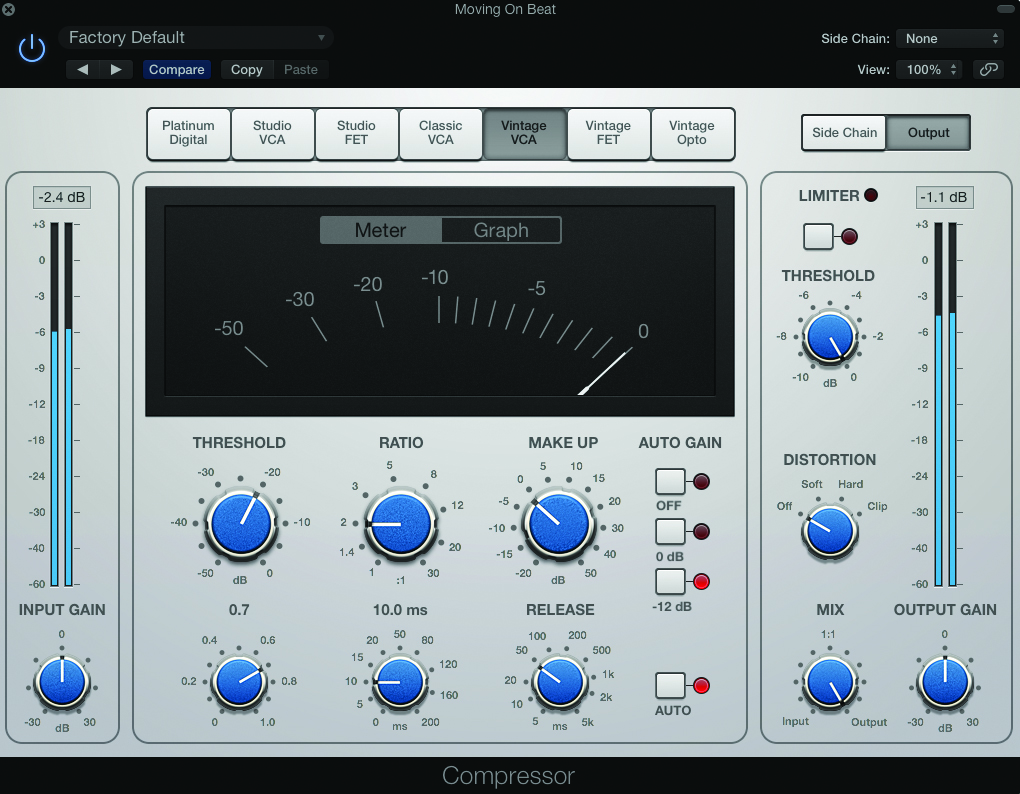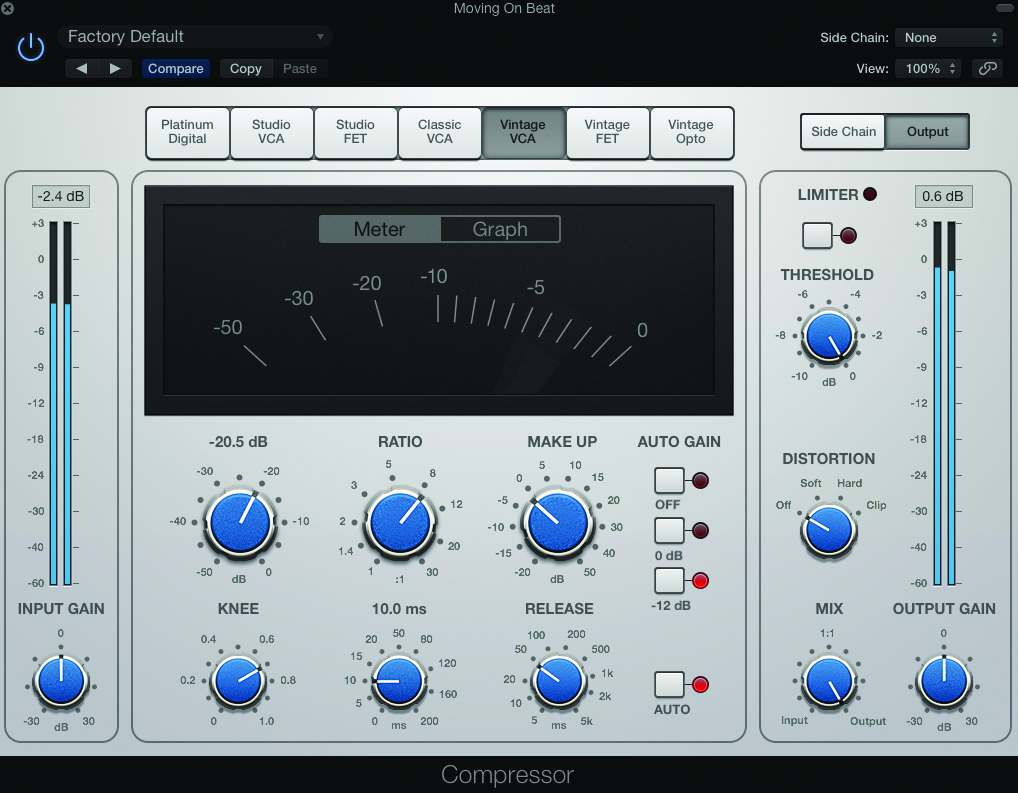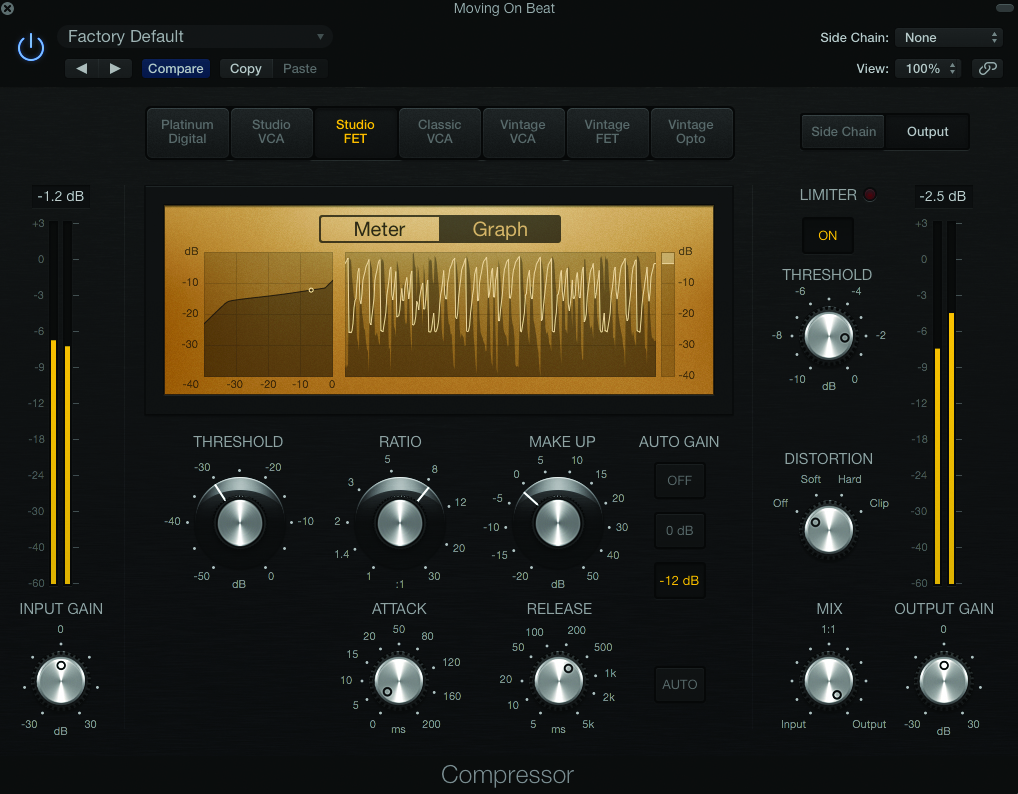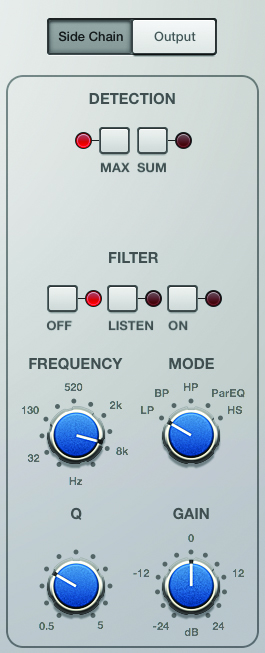Logic Tutorial: The Compressor
With a revised GUI as part of Logic Pro X 10.1, the Compressor has never been easier to use. Mark Cousins demonstrates the dynamic dexterity of the Compressor plug-in… One of the most useful improvements included with the release of Logic Pro X 10.1 has been the redesigned Compressor plug-in, arguably one of the most […]

With a revised GUI as part of Logic Pro X 10.1, the Compressor has never been easier to use. Mark Cousins demonstrates the dynamic dexterity of the Compressor plug-in…

One of the most useful improvements included with the release of Logic Pro X 10.1 has been the redesigned Compressor plug-in, arguably one of the most important plug-ins in Logic’s arsenal of software outboard effects.
While the functionality of the latest compressor incarnation hasn’t changed too greatly from the original version, its redesigned GUI offers some key functional improvements in terms of the plug-in’s day-to-day operation. It also highlights some key sonic differences between it and the seven other compressor models on offer in Logic. With this in mind, we thought a revised and in-depth look at Logic Pro X’s Compressor plug-in was perhaps well overdue…
Crossing the Threshold
The basics of compression, of course, revolve around the interaction between threshold and ratio. Signals that exceed a given threshold are attenuated at an amount defined by the ratio. Put simply, the compressor attenuates loud signals, effectively reducing the dynamic range of the input. As a result of this process a signal will potentially benefit from increased loudness, as well as an increased amount of body and sustain.
Setting the Threshold and Ratio on Logic Pro X’s Compressor is easy thanks to the reactive and visually-striking Gain Reduction Meter. Begin by setting the strength of compression you want – varying from a soft and subtle 1.4:1, through to harder-edged compression at 5:1 and almost limiting at 12:1.
Starting from a high threshold setting, lowering the threshold will result in more compression being applied, indicated by the aforementioned Gain Reduction meter.
Ideally, you want to achieve some movement both in and out of the Gain Reduction, so that the signal has time being both compressed and un-compressed.

As you set the compression, note how Compressor’s Auto Gain compensates for any Gain Reduction that’s taken place, letting you hear the result of your Threshold/Ratio settings without having to constantly adjust the output Make-Up control. That said I often find that the gain Make-Up, though great for auditioning purposes, can be over generous in its output settings. Once you’ve found your desired Threshold and Ratio, therefore, consider switching Auto Gain to Off and then manually adjusting the Make Up control to ensure consistent output levels with and without compression.
One area that can cause confusion is the Attack and Release settings. Thanks to the new Graph Display feature, though, Logic Pro X’s Compressor is a breeze to set up. Mapped against the transients of the input, the Graph displays the movements of the compressor over time. As such, it’s easy to see how the Attack and Release move in relation to the input.
A slower attack, for example (which is more forgiving on transients) is easy to fine-tune in relation to the attack transients on the graph. Likewise a softer release is easy to set as you can almost see the compressor ‘breathing’ in relation to the dynamic envelope of the input.
One aspect of the Compressor that’s become more apparent is the role and sonic contribution of the model parameter. Previously, only cryptic model names distinguished the different types of compressor you could select. Now the change in model is reflected in GUI itself, with clear visual similarities to hardware compressors.
The Studio VCA, for example, has a distinct Focusrite-like look behind it, while the Vintage VCA is eerily reminiscent of an SSL compressor. On the whole, look towards the FET and Opto compressors if you’re after a more characterful vintage sound, while various VCA models balance a more retro performance with sonic accuracy. Though blander in character, Platinum Digital is a precision tool with plenty of transparency.
Beyond the basics covered here, there’s plenty of additional functionality to be discovered from such a flexible production tool. To the right of the interface are the Output and Side Chain tools that really extend the functionality and sound of the compressor.
The Output section, for example, includes a built-in Limiter (which is great tool for catching problem transients that slip through the net) as well as a Mix control that lets you explore the sonic possibilities of Parallel compression, whereby a hard-acting compression is ‘softened’ by reintroducing some of the un-compressed signal.
Although there are some great third-party modeled compressors available, there’s little doubt that Logic’s own compressor is both versatile and sonically effective.

Thanks to the Compressor’s revised GUI, it’s never been easy to understand and exploit the variety of sounds it has to offer – from soft and subtle gain reduction, to something far more extreme and hard acting
Focus On Sidechain Features
The Side Chain section of the compressor contains a number of powerful features – most notably, frequency-conscious compression. Try setting a steep roll-off above 8kHz using the LP mode in the EQ section (you can always use the Filter Listen button to hear what this is like). Once active, the filtering makes the compressor particularly sensitive to the low end.
Try this on a drum loop, and notice how the kick drum can really dictate the movement of the compressor, creating a noticeable ‘pumping’ effect over the loop. Likewise, you can always reverse this process (using the HP mode) if you feel the bass drum is having too much impact on the compression taking place.
